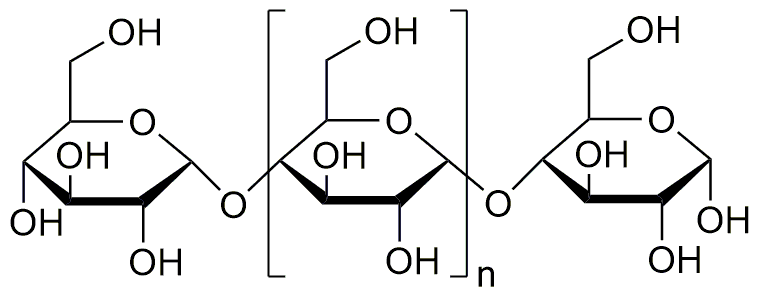Starch, soluble is widely utilized in research focused on:
- Food Industry: As a thickening agent and stabilizer in sauces, soups, and dressings, it enhances texture and mouthfeel while improving shelf life.
- Pharmaceuticals: Used as a binder in tablet formulations, it ensures uniformity and improves the release of active ingredients, making medications more effective.
- Cosmetics: Acts as a filler and emulsifier in creams and lotions, providing a smooth application and enhancing product stability.
- Biotechnology: Serves as a medium for cell culture, supporting the growth of microorganisms and cells in research and development settings.
- Textile Industry: Functions as a sizing agent, improving the finish and durability of fabrics while enhancing their appearance.
General Information
Properties
Safety and Regulations
Applications
Starch, soluble is widely utilized in research focused on:
- Food Industry: As a thickening agent and stabilizer in sauces, soups, and dressings, it enhances texture and mouthfeel while improving shelf life.
- Pharmaceuticals: Used as a binder in tablet formulations, it ensures uniformity and improves the release of active ingredients, making medications more effective.
- Cosmetics: Acts as a filler and emulsifier in creams and lotions, providing a smooth application and enhancing product stability.
- Biotechnology: Serves as a medium for cell culture, supporting the growth of microorganisms and cells in research and development settings.
- Textile Industry: Functions as a sizing agent, improving the finish and durability of fabrics while enhancing their appearance.
Documents
Safety Data Sheets (SDS)
The SDS provides comprehensive safety information on handling, storage, and disposal of the product.
Product Specification (PS)
The PS provides a comprehensive breakdown of the product’s properties, including chemical composition, physical state, purity, and storage requirements. It also details acceptable quality ranges and the product's intended applications.
Certificates of Analysis (COA)
Search for Certificates of Analysis (COA) by entering the products Lot Number. Lot and Batch Numbers can be found on a product’s label following the words ‘Lot’ or ‘Batch’.
*Catalog Number
*Lot Number
Certificates Of Origin (COO)
This COO confirms the country where the product was manufactured, and also details the materials and components used in it and whether it is derived from natural, synthetic, or other specific sources. This certificate may be required for customs, trade, and regulatory compliance.
*Catalog Number
*Lot Number
Safety Data Sheets (SDS)
The SDS provides comprehensive safety information on handling, storage, and disposal of the product.
DownloadProduct Specification (PS)
The PS provides a comprehensive breakdown of the product’s properties, including chemical composition, physical state, purity, and storage requirements. It also details acceptable quality ranges and the product's intended applications.
DownloadCertificates of Analysis (COA)
Search for Certificates of Analysis (COA) by entering the products Lot Number. Lot and Batch Numbers can be found on a product’s label following the words ‘Lot’ or ‘Batch’.
*Catalog Number
*Lot Number
Certificates Of Origin (COO)
This COO confirms the country where the product was manufactured, and also details the materials and components used in it and whether it is derived from natural, synthetic, or other specific sources. This certificate may be required for customs, trade, and regulatory compliance.

